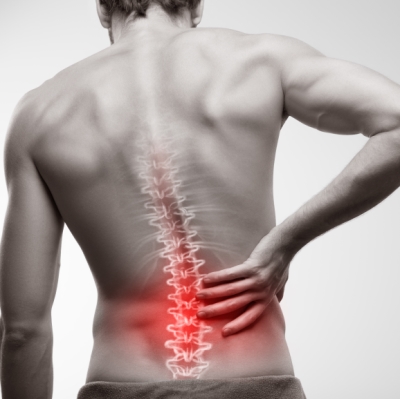
Testosterone deficiency, also known as hypogonadism, Low T, low testosterone, and andropause, is a condition that occurs when the gonads do not produce enough testosterone to meet the body’s needs. In males, it is the testes that provide most of the testosterone, with a small amount coming from the adrenal glands. Low testosterone signs and symptoms such as fatigue, weight gain, and decreased sex drive let you know when there is a problem. It is also important to point out that women may also develop low testosterone. In a woman’s body, it is the ovaries, adrenals, and peripheral tissue that provide her supply of testosterone.
The signs of low testosterone levels can differ from one person to the next. Unlike some hormones that serve only one function, testosterone influences many areas of a person’s life. Testosterone is crucial for proper brain functions, metabolism, libido, sexual performance, mood, muscle mass, bone density, hair growth, red blood cell production, insulin sensitivity, and more.
It is sometimes difficult to decipher the low testosterone symptoms because they are similar to the signs of growth hormone deficiency – another hormonal imbalance that often occurs around the same time, as well as multiple other health conditions. Both testosterone and GH begin to decline before most adults leave their twenties behind. Ten, twenty, or thirty years or more down the road, these hormone levels are sometimes so low that the body cannot carry out the associative functions. That is when low testosterone signs and symptoms begin to appear.
Low testosterone symptoms can occur in men or women.
What Is Low Testosterone and What Are the Signs?
Low testosterone is a condition that occurs when the levels of testosterone in the body cannot fulfill the needs of the androgen receptors. However, it is not just low levels of testosterone that can lead to a diagnosis. A person must also have some of the signs and symptoms of low testosterone to receive a Low T diagnosis and treatment. Low testosterone levels alone do not warrant treatment. Absence of symptoms means that the body is adjusting fine to the decrease in testosterone production.
What are the signs of low testosterone in men and women, and are they different?
Many of the low testosterone signs and symptoms are the same in men and women. The chart below highlights the most common gender-neutral symptoms associated with declining testosterone levels:
| Common Symptoms of Low Testosterone in Men and Women | ||
|---|---|---|
| Depression | Moodiness | Irritability |
| Anxiety | Stress | Weight gain |
| Muscle loss | Weakness | Fatigue |
| Lethargy | Reduced stamina | Insomnia |
| Frequent waking at night | Bone thinning | High LDL cholesterol |
| Elevated blood pressure | Decreased exercise capacity | Lack of focus |
| Forgetfulness | Impaired cognitive functions | Low sex drive |
| Anemia | Hair thinning or balding | Infertility |
| Grasping for words | Reduced work productivity | Decreased drive/motivation |
| Poor quality of life | Bleak outlook for the future | Social isolation |
A person does not have to notice all of the signs of low testosterone above to receive a diagnosis of hypogonadism. Once two or three of the issues appear, that is the time to get testosterone levels tested for a deficiency or imbalance.
Additionally, being diagnosed with any of the following health issues increases the risk of having low testosterone levels:
- Obesity
- Type 2 diabetes
- Metabolic syndrome
- High blood pressure
- Cardiovascular disease
- Stroke
- Heart attack
- Atherosclerosis
- High LDL and total cholesterol
- Elevated triglycerides
- Low HDL cholesterol
- Osteoporosis
- Osteopenia
- Dementia
If you have any of these conditions and suffer from low testosterone signs and symptoms, contact a hormone specialist for testing.
Having only a few of the symptoms of low testosterone increases the risk of receiving a positive diagnosis.
What Are the Symptoms of Low Testosterone in Men?
Knowing the general signs and symptoms of low testosterone in males from the list above is an excellent starting point. There are still other issues that men with hypogonadism often face. It is probably already clear that the symptoms of low testosterone in men can affect all areas of a person’s life – from productivity on the job to relationships at home. Because testosterone levels continue to decrease as times passes, the low testosterone signs in males will only worsen unless action is taken. That also increases the risk of developing the potentially life-threatening health conditions mentioned in the last section.
Other signs of low testosterone in males include:
- Gynecomastia – the enlargement of male breast tissue
- Night sweats and hot flushes – men get them, too
- Decreased morning erections
- Trouble achieving or maintaining an erection
- Reduced semen volume
- Changes in facial or body hair growth
- Testicular shrinkage
- Scrotum softening
Urinary problems associated with benign prostatic hyperplasia are not necessarily attributed to low testosterone, but perhaps they should be. As testosterone levels decline, the prostate becomes enlarged, interfering with urinary flow. Although the science is still out on the direct correlation between testosterone decline and prostate growth, it is something to consider.
Sexual changes can be some of the most frustrating signs of low testosterone in men. It is imperative to seek out the help of a hormone doctor when these changes are detected.
Having low testosterone signs and symptoms can significantly interfere with a man’s quality of life and self-esteem.
What Are the Symptoms of Low Testosterone in Women?
Women need testosterone as much as men, just not in the same amount. It is essential that females reaching middle-age understand and recognize these symptoms. Low testosterone in women significantly increases the risk of cardiovascular disease, type 2 diabetes, obesity, breast cancer (higher estrogen levels in many cases), and other health concerns.
Other signs of low testosterone in females include:
- Vaginal dryness
- Decline in sexual fantasies and dreams
- Reduced satisfaction and orgasm intensity
- Irregular menstrual cycles
- PMS symptoms
- Hot flashes
- Night sweats
These signs of low testosterone in women can also interfere with interpersonal relationships with a spouse or partner. It is not uncommon for a woman to retreat inward, cutting herself off from social activities when she has Low T. Because testosterone decline also impacts estrogen levels, a woman’s bones and brain functions may suffer, increasing her risk of developing osteoporosis and dementia – two issues that cause of loss of independence in later years.
Women need to be cognizant of the low testosterone signs and symptoms so they can contact a hormone specialist for the proper treatment.
How to Know If Your Symptoms Are Signs of Low Testosterone
A visit to a family physician to discuss symptoms such as weight gain, insomnia, fatigue, and low sex drive when in one’s fifties or sixties is often met with one very factual truth – aging. Yes, getting older does indeed influence many of the low testosterone signs listed in this review. However, because hormones impact all of these functions and areas of well-being, testosterone deficiency should not be overlooked.
The warning signs of low testosterone are apparent – when a person knows what to look for and responds accordingly. General physicians are not trained in hormonal imbalances. They typically do not know how to recognize the low testosterone signs and symptoms, or how to distinguish them from other hormone deficiencies. That is where the expertise of the hormone specialist is essential. Getting the right treatment customized for your body’s needs is crucial – hormone replacement therapy should never be a one-size-fits-all treatment.
If you believe you may have symptoms of low testosterone or any other hormonal issue, please contact RX Hormone medical clinic for a confidential phone consultation at no charge. We are here to help restore balance to your hormones and improve your overall quality of life.
